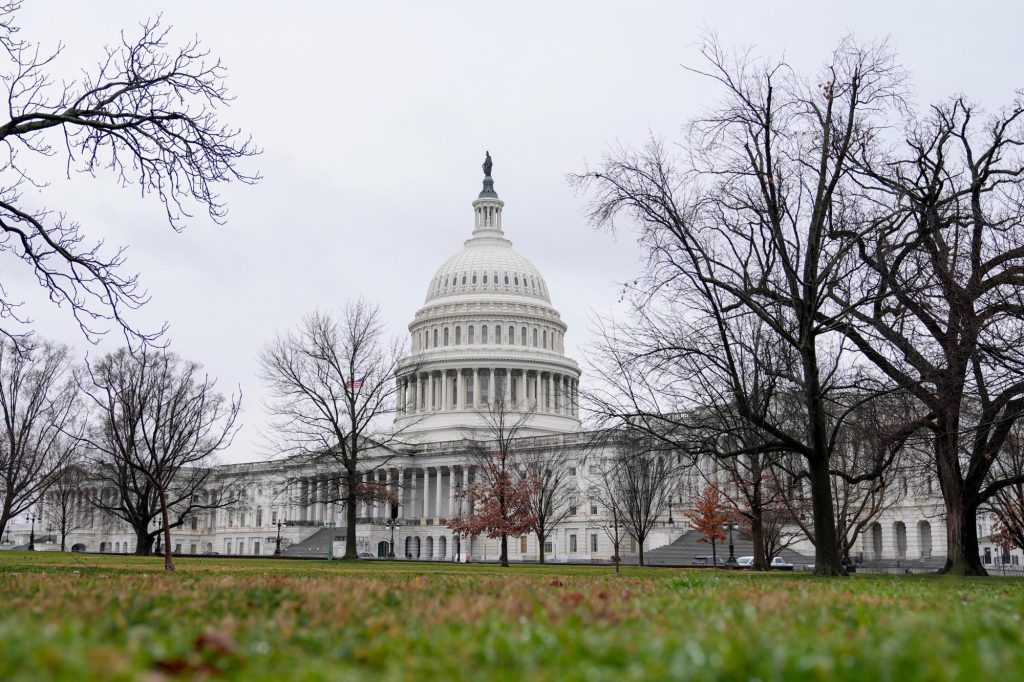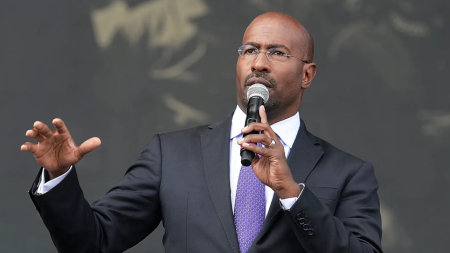By KEVIN FREKING (Associated Press)
The Senate has passed a $460 billion package of spending bills on Friday, meeting the deadline to prevent the shutdown of many key federal agencies. This vote marks the halfway point for lawmakers in completing their appropriations work for the 2024 budget year.
This package consists of six annual spending bills, which have already been passed by the House. It is now headed to President Joe Biden for his signature. The White House has confirmed that the President will sign it into law on Saturday, ensuring that agencies will not shut down and can continue their normal operations.
Meanwhile, lawmakers are in discussions about a second package of six bills, including defense, aiming to fully fund all federal agencies by a March 22 deadline.
Senate Majority Leader Chuck Schumer, D-N.Y., commented, "This bipartisan package proves that something can still get done in a divided government."
Schumer mentioned that the passage of the bill would allow for the hiring of more air traffic controllers and rail safety inspectors, provide federal firefighters with a raise, and enhance support for homeless veterans, among other things.
The Senate approved the bill with a 75-22 vote. Lawmakers worked hard to reach a final vote just hours before the midnight deadline for the initial set of appropriations bills. They aimed to vote on several amendments and express their opinions on the bill and other priorities during the floor debate. It was uncertain whether senators would manage to avoid a brief shutdown, even though the eventual passage was never really in doubt.
Sen. Susan Collins, the top-ranking Republican member of the Senate Appropriations Committee, urged her colleagues to stop taking risks. She emphasized the importance of clearing these bills and completing the fundamental task of funding the government.
These votes come over five months into the current fiscal year, following a series of stopgap bills used by congressional leaders to keep federal agencies funded for a few more weeks or months while they struggled to reach agreement on full-year spending.
In the end, Congress is expected to allocate about $1.66 trillion for the full budget year ending on Sept. 30.
Republicans were able to maintain non-defense spending at a relatively consistent level compared to the previous year. Supporters consider this progress given the current trend of annual federal deficits exceeding $1 trillion. However, many Republican lawmakers were seeking much larger cuts and more policy victories.
The House Freedom Caucus, which includes many of the GOP’s most conservative members, encouraged Republicans to vote against the first spending package and the ongoing negotiations for the second one.
Democrats successfully opposed most of the policy provisions that Republicans aimed to include in the package. For instance, they resisted an attempt to block new regulations that expand access to the abortion pill mifepristone. They also managed to fully fund a nutrition program for low-income women, infants, and children, allocating about $7 billion for the WIC program, a $1 billion increase from the previous year.
Republicans accomplished some policy victories. For example, one rule will stop the sale of oil from the Strategic Petroleum Reserve to China. Another rule prevents the Justice Department from investigating parents who speak freely at local school board meetings.
Another rule strengthens gun rights for certain veterans, but opponents say it could make it easier for those with very serious mental health conditions like dementia to get a firearm.
Sen. Patty Murray, the Democratic chair of the Senate Appropriations Committee, said, “This isn’t the package I would have written on my own, but I am proud that we have protected absolutely vital funding that the American people rely on in their daily lives.”
Sen. Rand Paul, R-Ky., said one problem he sees with the bill is that there was too much compromise, and that led to too much spending.
“Many people don’t understand this. They think there is no cooperation in Washington when the opposite is true. There is compromise every day on every spending bill,” Paul said.
“It’s compromise between big-government Democrats and big-government Republicans,” he added.
However, with a divided Congress and a Democratic-led White House, any bill that doesn’t have buy-in from members of both political parties stands no chance of passage.
The bill also includes more than 6,600 projects requested by individual lawmakers with a price tag of about $12.7 billion. The projects attracted criticism from some Republican members, though members from both parties broadly participated in requesting them on behalf of their states and congressional districts. Paul called the spending “sort of the grease that eases in billions and trillions of other dollars, because you get people to buy into the total package by giving them a little bit of pork for their town, a little bit of pork for their donors.”
However, an attempt by Sen. Rick Scott, R-Fla, to remove the projects only garnered 32 votes with 64 against. Murray said Scott’s effort would overrule “all the hard work, all the input we asked everyone to provide us about projects that would help their constituents.”
Despite lawmakers passing spending bills five months into the fiscal year, Republicans are portraying the process as improved because they broke the cycle of passing all the spending bills in one massive package that lawmakers have little time to study before being asked to vote on it or risk a government shutdown. However, others said that breaking up funding into two chunks of legislation was hardly a breakthrough.
The first package now heading to Biden’s desk covers the departments of Justice, Veterans Affairs, Agriculture, Interior and Transportation, among others.









